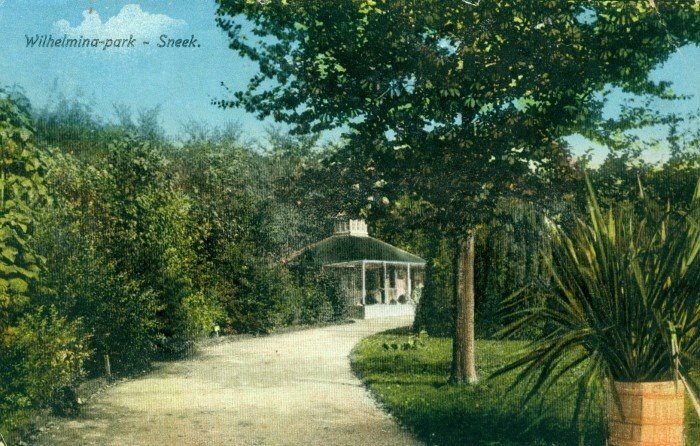
SSHUW Wilhelminapark
Wilhelminapark
Wilhelminapark in Sneek was laid out in 1898-1899. It was commissioned by the guardians of the Old Burger Weeshuis, who wanted the inhabitants of Sneek to have a place where they could take a relaxing walk in nature. There was not much opportunity for this in the town itself. The park was laid out on a piece of land located between the Bolswarderweg and the Oude Dijk. It is a relatively small piece of land (2.73 acres). When the park was laid out, it was in the middle of meadows. There were hardly any buildings on this side of the Sneek-Leeuwarden railroad line. Only at the beginning of the Oude Dijk were a few cottages and in the corner of the park located on the city side was the streetcar station.
The OBW wished the residents of Sneek a truly beautiful park. Therefore, the commission for the design went to the then very famous garden architect Gerrit Vlaskamp (1834-1906). At that time - so we are talking about 1898 - he had already designed hundreds of gardens in Friesland and Groningen for mostly well-to-do clients as well as the Wilhelminapark in Grou and the Westerpark in Leeuwarden. The Wilhelminapark in Sneek is Vlaskamp's top design. He was able to put all his experience, expertise and imagination into it. Vlaskamp designed a park in the English landscape style, with winding paths and whimsically shaped ponds. Hills were raised from the excavated soil of the ponds on the side of the Oude Dijk, creating differences in height. On that side, he also created a wooded area. On the other side - on the side of the Bolswardweg - the park is more open. There he had flower beds laid out and low shrubs planted. Vlaskamp also succeeded in creating lines of sight, creating vistas into the depths. The clever thing is that these effects and these sightlines can still be seen today. So Vlaskamp conceived a park that more than a hundred years later, when all the trees would have grown enormously, was still a park that seemed larger than it was.
No expense was spared to make it a beautiful park. Particular exotic ornamental trees were planted, some of which are still in the park today, such as the Robinia pseudo-acacacia (Schijnacacia), the Ginkgo biloba (Japanese walnut tree), the Taxodium distichum (Swamp cypress), Pterocarya fraxinifolis (Common Wingnut), the Fraxinus excelsior 'Jaspidea' (Golden ash), the Ulmus x hollandica (Dutch elm), the Platanus x acerfolia (Plane tree) and the Metasequoia glyptostroboides (Water cypress).
The official opening took place on Sunday, May 14, 1899.